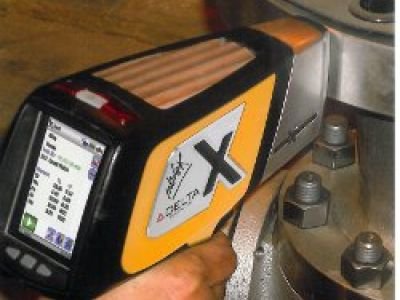XRF - Positive Metal Identification

Improving quality is done in small steps. This month we are highlighting a small but important step with the addition of a very specialized type of equipment. A portable XRF (X-Ray Fluorescence) Alloy Analyzer enables us to non-destructively measure most elements that comprise our raw materials by positively confirming the chemistry of the alloy.
XRF Alloy Analyzer
This portable XRF can measure many alloys that are used at Protomatic. Alloy information is displayed on the rear screen and exported as a quality record. This device can measure alloys of Aluminum, Titanium, and all steels. It also measures Red metals, Precious metals, Super alloys, and Magnesium. RoHS traces in plastics or metals are also measured.
XRF Test Report
The reports available to our customers will include a list of the essential elemental analysis, a photo of the target area on the material blank and a spectral graph of the elements.
Why – PMI (Positive Material Identification)
Most Machine shops typically rely on their metal suppliers to deliver the specific alloy that is required for the job. They purchase and then assume that they have received the correct alloy. A slightly better practice is to order the material with a certification. The “cert” will have chemical composition or physical performance data for a test sample from the same material heat.
The best practice is to order the material with a certification and then confirm that the material ordered is what was requested. This requires the use of an outside laboratory or an in-house instrument such as an XRF Alloy Analyzer.
How it works
An XRF Alloy Analyzer produces a low level X-Ray that excites the surface of the test sample. This allows the sample elements to emit a spectral pattern that is measured by a Silicon Drift Detector (K and L Shell Emission Lines). The spectral response is then compared to a data base of various alloys. The XRF instrument displays the best alloy comparison for the measured data. This information is printed in various formats such as the spectral response, a confirmation photo of the test area, and the chemical composition results as compared to the alloy standards.
Features and Limitations
This is a portable device so it can be used on large blanks. It does not measure every element. Lighter elements between Hydrogen-1 and Sodium-11 on the periodic table are not measured nor are noble gases. However, it is capable of measuring most elements between Magnesium-12 and Plutonium-94.
What this means to our customers
Starting in late Q2-2012, we will be adding this test to incoming raw materials. This instrument offers additional confidence and certainty that your parts are manufactured with the specified material for your application.


